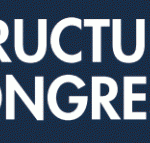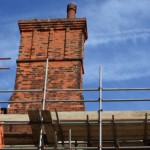
The field of Structural Engineering is rapidly changing. Codes are revised every 3-5 years, design software is updated monthly, and new products flood the market every day. Needless to say, it can be a challenge as a practicing structural engineer to stay ahead of all the changes. This is where engineering peer reviews come in.
Now, put yourself in the shoes of a building official. You have just been handed a 200-page construction document outlining the next new 10-story building in your city and the owner wants a building permit, ASAP. You’re responsible for life-safety, zoning, and structural review. Clearly the deck is stacked against you – it’s a challenge to keep current with advances in ONE design discipline, but near impossible to keep current with ALL of them! You need some independent help.
What is a Peer Review?
Project Peer Reviews are just what the name implies – independent evaluations of project designs that are performed by professionals within the same design discipline. They enhance public safety by verifying that there are no errors in the engineering design. Reviews are more reliable when performed by peers with the same professional background and expertise. Engineering peer reviews may be performed for quality assurance, risk management, constructability, cost, or code compliance.
When are they required?
Some state building codes, such as Massachusetts and Connecticut, mandate that structures exceeding certain threshold limitations such as height, volume, or number of occupants be subject to a structural Peer Review. Some local jurisdictions, such as the City of Chicago, IL, allow voluntary submission of an independent Peer Review to accelerate a permit review. Building officials can also require independent peer reviews be completed for unusually complicated designs. Finally, a project owner or engineer may simply benefit from having an independent set of eyes to check over a design, regardless of whether the review is mandated.
How should engineering peer reviews be approached?
When approached properly, a Peer Review can be beneficial for everyone involved. Peer Reviews should not create an adversarial relationship between the Engineer of Record (EOR) and the reviewing engineer. At Summit Engineering, we take the approach that Peer Reviews are learning opportunities, usually for both the EOR and the reviewing engineer. It is important to take a collaborative and communicative approach to Peer Reviews. The most effective reviews occur when the reviewing engineer performs an independent analysis of the structure and then constructively communicates any concerns, questions or discrepancies to the design engineer.
If your next project requires, or might otherwise benefit from, a structural Peer Review – we would love to help. Also, feel free to read our free eBook: 5 Questions You Should Ask Before Hiring a Structural Engineer.






























